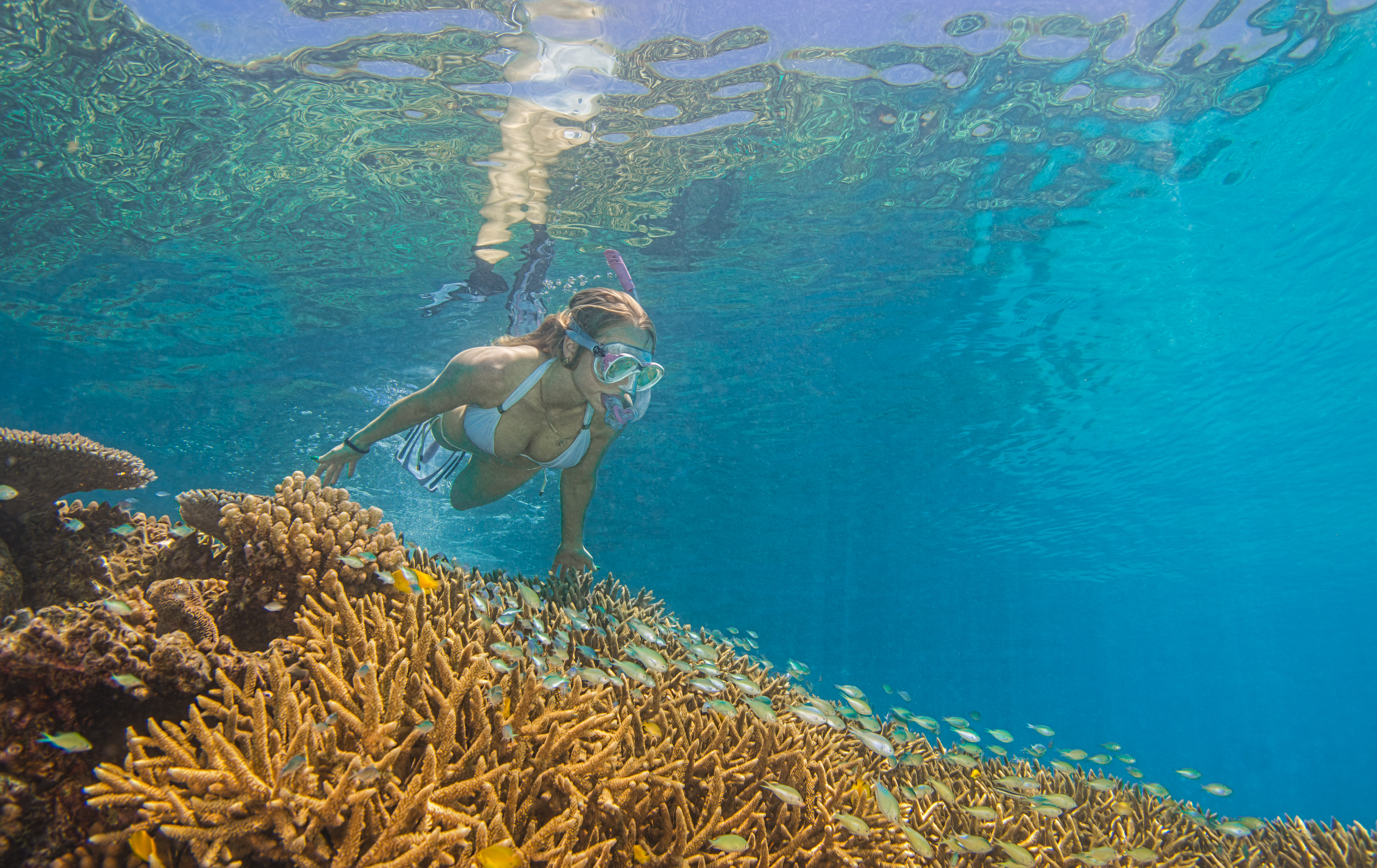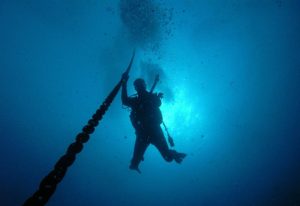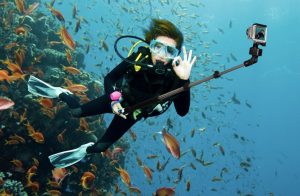
Tips for taking fantastic photos of the Great barrier Reef
For many visitors to Australia, diving and snorkelling on the Great Barrier Reef is a once-in-a-lifetime experience. People flock to the crystal clear waters of the Coral Sea and can’t wait to jump in. The advent of small high-definition cameras such as GoPros has changed the way people snorkel and dive the Great Barrier Reef as well. Rather than carrying around bulky waterproof housings for expensive cameras, many people now carry these small, relatively inexpensive cameras. Some people even get a waterproof case for their smartphones. With all this underwater photography going on, we thought we would set out some tips to help turn your underwater snaps into true masterpieces.
Lighting
Lighting is the single most important element in taking any photo. Your picture will look dark and features will be indistinguishable with too little light. Too much light and everything appears bright and overexposed. When snorkelling, be sure to keep the sun at your back. This will minimise shadows and naturally light your subjects. This rule is even more important in the water; especially on cloudy days, it can be very difficult to get a good snap because the sun isn’t cooperating. If it’s in your budget, try a small strobe light, which is a super intense flash that will add some amazing colours back into your photos.
Depth
This aspect is related to light. The deeper you go, the less light there will be. As you descend, you will also lose the red end of the spectrum; one fun trick divers like to do on their deep diving specialty is take a bright red object underwater. The deeper you go, the item will start to darken, first into what appears dark green, then eventually black if you go down deep enough. There are a couple of remedies to get the right colour balance in your photos. As mentioned above, you can invest in a strobe light that will create a bright flash, thereby adding the proper colours back in. Another solution is a filter. These pieces of coloured glad go over the camera lens, and add the red light back in. The final option is Photoshop (or a similar program) where you can upload your photos.

Distance
This may seem simple, but distance plays a big factor in the quality of your photos. While many marine creatures can be camera-shy, swimming up as close as you can will usually yield much better pictures than taking pictures from afar. Also, be wary of the zoom feature. While it will shorten the distance to the subject, there is usually a very heavy trade-off in picture quality as they will appear fuzzy and pixilated. Some key tips to help with the distance include using a selfie stick or pole, or swimming very slowly so as not to disturb the animal. Keep in mind, marine creatures are wildlife and should be treated with respect, and especially no touching.


